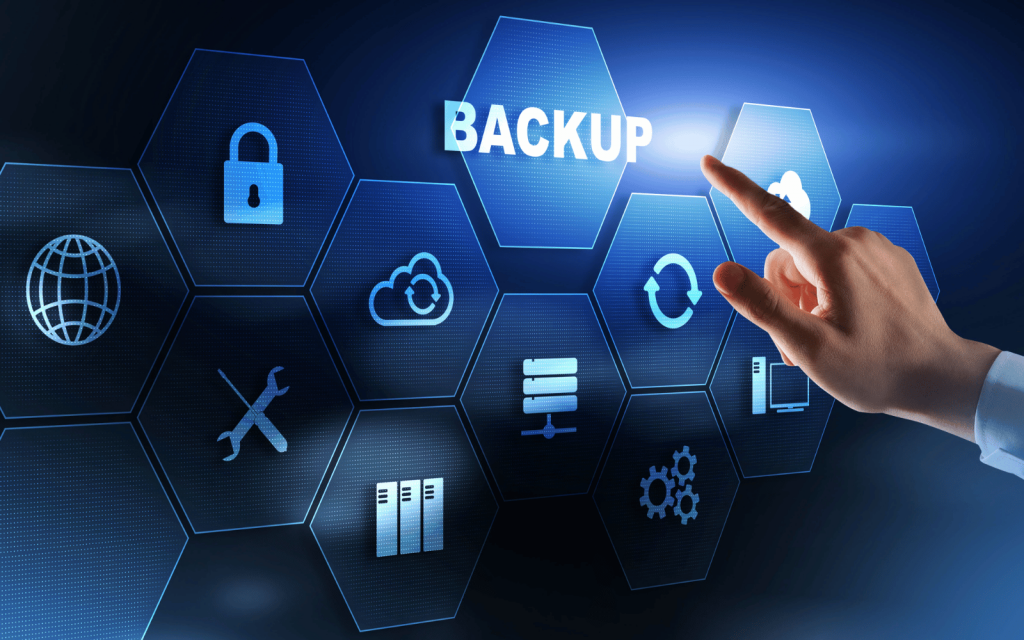Every business, no matter its size, generates and uses digital data every day. This data is so important that if any of it is lost, businesses can experience things like delays in filling customer orders and operational paralysis, leading to a breach of customer trust and ultimately, reputational damage. In the worst cases, data loss due to not having a backup strategy in place can even force businesses to close their doors.
This means backing up data and keeping it safe is an incredibly important component of your business’s IT environment. Let’s explore some of the backup strategies businesses can use to keep their data safe.
Backup basics
Your business needs some sort of a backup plan, even if it’s incredibly basic. Even if all you do is have your staff keep backups of their work files on external hard drives that remain on the business premises at all times, at least you have something in place in case the worst happens.
And sadly, with the likelihood of data breaches, hacks, accidental data loss, hardware failure, etc. being quite high, the worst probably will happen at some point in your business’s journey. You simply can’t afford to not be able to restore at least some of the data that will be lost.
The first step to take here is to figure out what the most important data on your business network is and where it’s currently stored. Once you know that, you’ll know what needs to be backed up, and you can put basic measures in place to make sure that happens.
Just don’t assume that your data is already safely backed up because you use OneDrive or iCloud on all of your business endpoints. Do your due diligence and make 100% sure what the situation is.
The 3-2-1 approach
In the IT world, the best way to approach the backing up of data is called the 3-2-1 rule: having three copies of your business data (your production data and two copies of it) on two different types of media (hard drives/tape/DVDs/Blu-rays, etc.), with one copy being stored somewhere off-site.
That last part is important because, in these uncertain times, you don’t know if earthquakes, civil unrest, tornadoes, or fires are in your future, and it’s best to make sure your backups are kept somewhere those things can’t affect it.
3-2-1 is a time-honoured backup strategy that has worked since the 80s. The arrival of the cloud has made storing data off-site simpler than ever, as cloud vendors have datacentres located around the globe that are nearly impossible to take offline. So all you need to do is take care of the 3-2 part, link it to the cloud, and you’re good.
Automate backups
Do not rely on your employees to manually back up their files. Rather put tools that can automate the process in place so that specific files are backed up at a set time (or even continuously) without any human intervention required.
By approaching backups this way, your staff is not responsible for their own data. And when backing up is not one of their KPIs, they are free to focus on other things.
If you’d like to read up on how to enable automatic backups in Windows 11, take a look at this article by Microsoft.
Endpoints
For many businesses, the most recent data lives on the desktops or laptops of employees. Sometimes, even though ideally they really shouldn’t, employees will work on files saved directly on their computers and only upload them to shared network stores when they are finished.
This problem is mitigated somewhat when those files are stored in places like OneDrive as this keeps a live copy in the cloud, but people don’t always use their cloud storage folders to save their work files.
The ultimate solution is to institute live backups of every endpoint in the business, and constantly pull that data into backup locations like the company’s cloud storage or a designated backup resource like a Network Attached Storage device (basically an external hard drive connected to the network and made available as a remote share location to all staff).
Head in the cloud
The cloud offers affordable and extremely reliable storage, so backing up to the cloud should absolutely be a part of every small business’s backup strategy.
Cloud storage is far more affordable than setting up your own on-premises backup server, plus it’s always available (or nearly always, with most cloud services offering at least 99.9% uptime guarantees).
Simply purchase online storage from any of the big providers (Microsoft, Google, Amazon, etc.), set it as the default backup location for all company endpoints, and voila, you have a Backup Strategy in place.
Be sure to take advantage of any cloud storage you already have access to if you have active Google Workspace or Microsoft 365 subscriptions – you could already have up to 5TB of online storage per person in your business by doing that.
Data, data, data
We’ve said it many times before: data is the lifeblood of any modern business. Whether that’s client data, financial data, project data, email data, or any other kind of data, data is important to the continued survival of your business in some way or the other.
That is why having a backup strategy in place is absolutely non-negotiable in 2023. If you still don’t know where to start, try talking to your IT people. Start with the question: “Do we have a backup strategy in place, and if so, what is it?”.
Best of luck to you.
